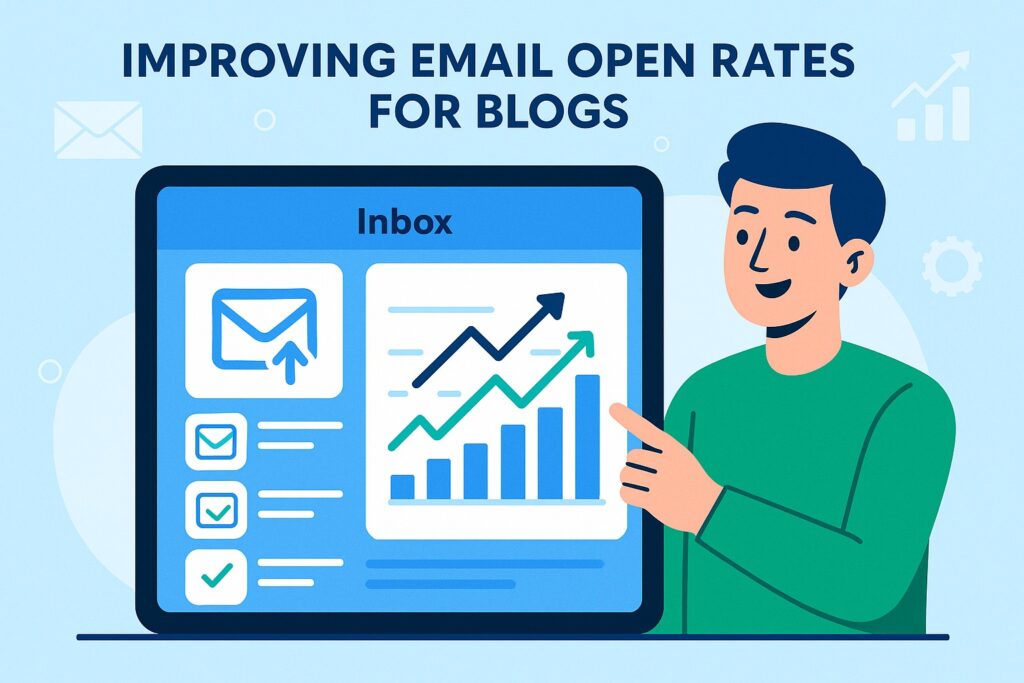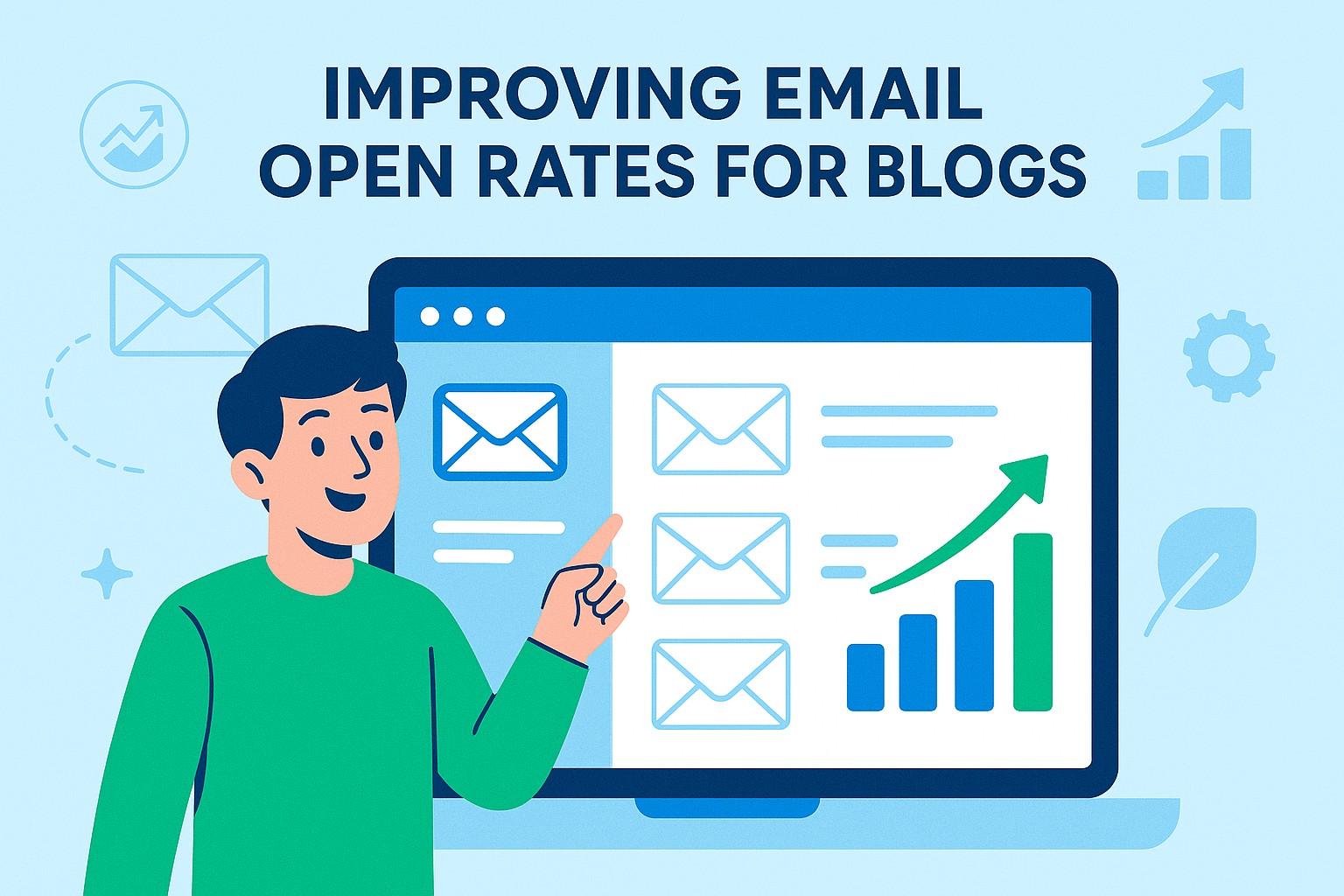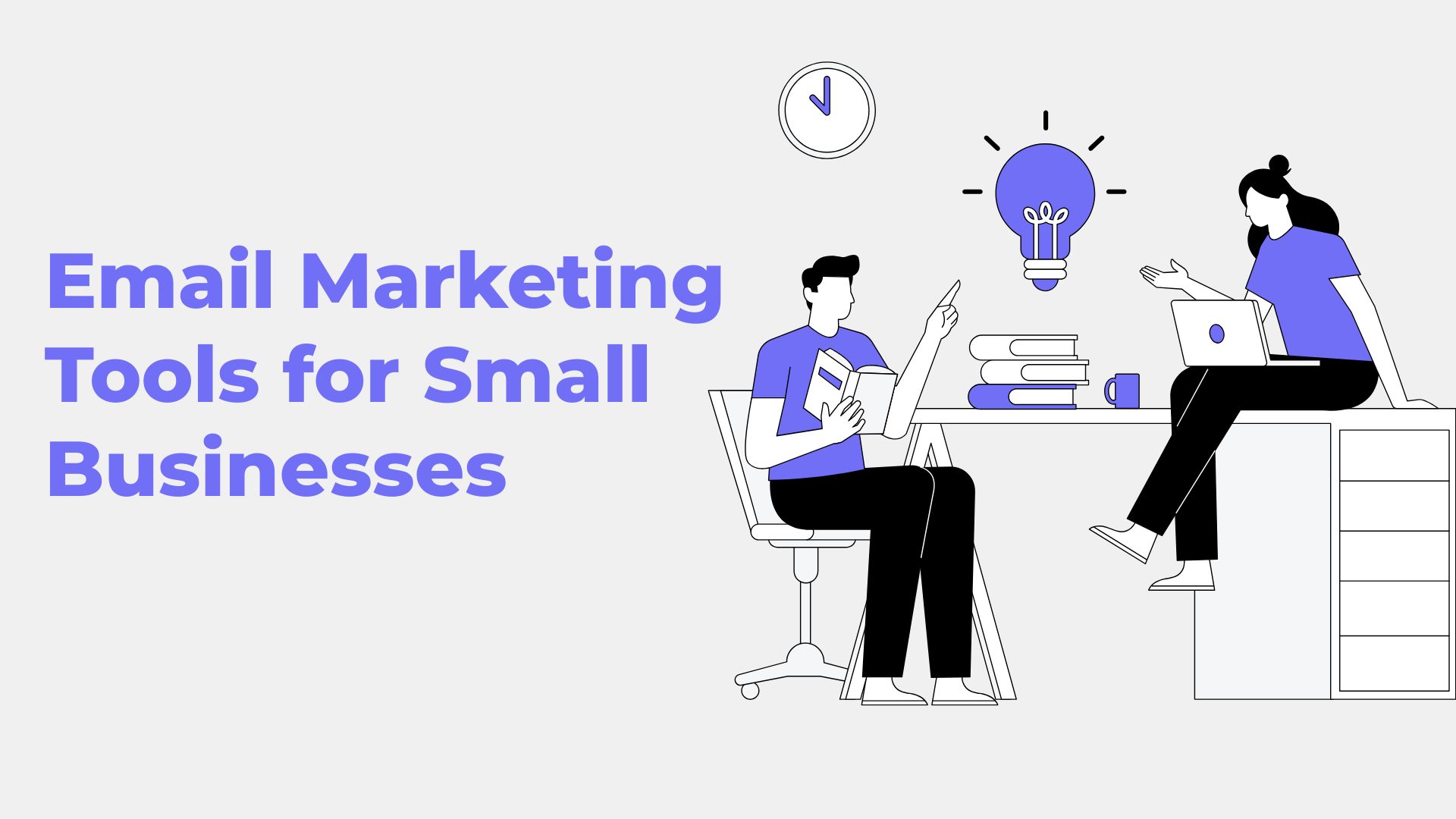If you’re running a blog, you know how hard it is to get people to actually open your emails. You spend hours writing a post, crafting tips, or sharing updates, but if your email stays unopened, all that effort goes to waste.
I’ve tried a bunch of strategies myself, and some work way better than others. Here’s a simple, human approach to improving your email open rates—with examples from real blogging experiences.
I’ll be honest — when I started my blog, my emails were mostly ignored. I’d spend hours writing posts, crafting tips, and sending updates… and barely anyone clicked. It was frustrating.
After some trial and error, I finally discovered the strategies that actually make a difference. I tried tons of strategies, made mistakes, and learned a few tricks that actually improved my open rates. These are the approaches I use today—and ones you can try for your blog as well.
Make Your Subject Line Irresistible
Your subject line is like your email’s headline—the very first thing readers see, so make it count. If it’s boring, people won’t open it.
Example:
Instead of: “New blog post is live”
Try: “How I grew my blog traffic by 200% in 30 days”
See the difference? The second one promises value and sparks curiosity.
Quick tip: Keep your subject lines under 50 characters so they’re easy to read on mobile—remember, over half of all email opens happen on mobile devices!
Personalize Your Emails
People open emails from people they know or feel connected to.
Example:
I once sent two versions of an email to my subscribers: one with just the blog post link, and one with their name included in the subject line:
“Sarah, these 3 blogging tips changed everything”
Guess what? The personalized one had 35% higher open rates.
Tip: Segment your audience. For example, send beginner blogging tips to new subscribers and advanced strategies to experienced readers.
Time Your Emails Smartly
Timing matters. Sending an email at the wrong time is like ringing someone’s doorbell when they’re not home—it just gets ignored.
Example:
I used to send emails at 10 PM, thinking night readers would catch them. Open rates were low. When I switched to Tuesday at 9 AM, open rates increased by 25%.
Try testing different times to see what works for your audience.
Write a Friendly Preview Text
The preview text is that little snippet next to the subject line. It’s like a mini trailer for your email.
Example:
Subject: “5 Blogging Mistakes You’re Probably Making”
Preview text: “And how to fix them in under 10 minutes”
This gives readers a reason to click.
Make Your Sender Name Recognizable

People are more likely to open emails from senders they know and trust, whether it’s a real person or a familiar brand.
Example:
I noticed emails from “Admin@MyBlog.com” rarely got opened. When I switched to “Fahad from BlogTips”, open rates jumped by 18%.
Test Your Subject Lines (A/B Testing)
Don’t guess what works—test it.
Example:
I sent the same email to two groups:
- Group A: “How to Increase Blog Traffic Fast”
- Group B: “3 Simple Ways I Doubled My Blog Readers”
Group B had twice as many opens. It’s all about experimenting and learning what resonates.
Avoid Spam Triggers
Spammy-looking emails get ignored—or worse, never reach the inbox.
- Avoid too many exclamation marks: “Earn $$$ fast!!!”
- Don’t use all caps: “READ THIS NOW”
- Be honest with your subject line
Tip: People appreciate transparency. If you promise a tip, deliver it.
Focus on Quality Subscribers
It’s better to have 1,000 engaged subscribers than 10,000 inactive ones.
Example:
I once bought an email list thinking it would save time. Open rates were below 5%. When I focused on organic signups via blog posts and lead magnets, open rates jumped above 40%.
Re-Engage Inactive Subscribers
Some readers stop opening emails—but they’re not lost forever.
Example:
I sent a “We miss you” email offering a free mini-guide. About 15% of subscribers who hadn’t opened my emails in months returned and started engaging regularly after I sent a re-engagement email.
Keep Improving and Learning
Email marketing isn’t one-size-fits-all. Track your numbers, test new strategies, and adjust.
Example:
I track open rates, click-through rates, and subscriber activity every month. Every small change—like adjusting the subject line or send time—adds up.
Takeaways
- Write subject lines that spark curiosity or show value
- Personalize your emails and segment your audience
- Send emails at the right time and use a recognizable sender name
- Test, improve, and focus on engaged subscribers
With these real-life strategies, you’ll see your blog email open rates rise. It takes experimentation, but the results are worth it.
Final Thoughts
Getting more people to open your emails doesn’t have to be complicated—it just takes a few smart tweaks.
- Make your subject lines interesting
- Personalize whenever you can
- Send emails at the right time
- Be honest and human
- Focus on subscribers who actually care
I promise — if you apply these strategies, you’ll see more people opening your emails, reading your blog, and engaging with your content.
Frequently Asked Questions (FAQ)
What is a good email open rate for blogs?
A typical open rate for blog emails is around 20–25%, but it varies depending on your audience and niche. Highly engaged subscribers can see open rates above 40%.
How can I make my email subject line more effective?
Keep it short, interesting, and value-driven. Use curiosity, numbers, or personal touches. Example: “5 Blogging Tips That Doubled My Traffic” grabs attention better than “New Blog Post is Live.”
Does sending emails at a specific time improve open rates?
Yes. Timing matters. Experiment with mornings, early afternoons, or mid-week days to find when your audience is most active. Tracking and testing is key.
Should I personalize my blog emails?
Absolutely. Adding the subscriber’s name or segmenting emails by interests can significantly increase open rates. People respond better when emails feel personal and relevant.
How often should I send blog emails?
It depends on your content and audience. Most bloggers send 1–2 emails per week. Too many can annoy subscribers; too few can make them forget about your blog.
Can I improve open rates with preview text?
Think of the preview text as a mini-trailer for your email—it gives readers a sneak peek and entices them to click. Use it to summarize your email content or tease value, encouraging readers to click and read more.
How can you make sure your emails don’t end up in the spam folder?
Avoid all caps, excessive punctuation, misleading subject lines, and spammy words like “FREE $$$” or “Act Now!” Always be honest and professional.
How do I re-engage inactive subscribers?
Send a friendly email reminding them of your blog’s value, or offer a free guide, checklist, or exclusive tip. Even a simple “We miss you” email can bring readers back.
Are big email lists better than small engaged lists?
Not necessarily. A smaller, engaged audience is more valuable than a large list of inactive subscribers. Focus on connecting with people who genuinely care about your content, rather than just chasing numbers. True engagement comes from an audience that values and interacts with what you share.
How do you know if your email strategies are actually working?
Use email marketing tools like MailerLite, Mailchimp, or GetResponse to track open rates, click-through rates, and subscriber activity. Regularly analyze and adjust your emails for better performance.









Leave a comment